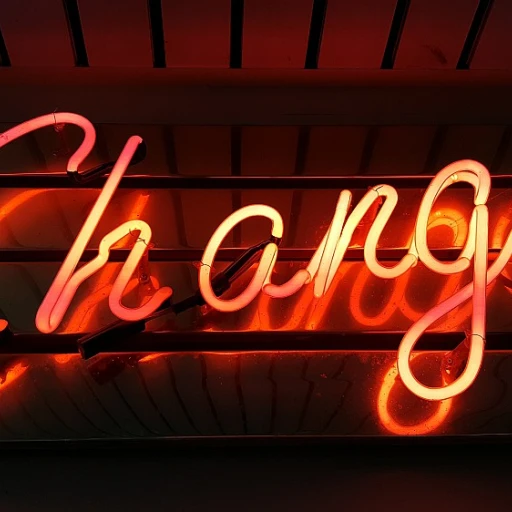Understanding hr predictive analytics
Decoding what hr predictive analytics is all about
Ever wondered why some companies seem to have a crystal ball when it comes to employee management? The answer often lies in hr predictive analytics. Picture this: instead of just looking at historical data, HR departments are now using complex algorithms and machine learning to make educated predictions about future trends.
Don't just take my word for it. PwC reported that as of 2020, around 44% of companies are leveraging predictive analytics to forecast employee turnover. That's a huge jump from just 12% in 2016. This isn't just some fad. Big names like Amazon and Google are all-in on this approach, fine-tuning their talent management strategies better than ever.
According to a study by Deloitte, 70% of organizations consider people analytics a high priority, investing in a myriad of technologies to make their HR strategy more data-driven. Using predictive analytics in HR can help companies anticipate hiring needs, improve employee engagement, and even identify potential leaders within the workforce.
Let’s take a closer look. For example, Hewlett Packard (HP) implemented a predictive model to prevent employee turnover. By analyzing data on job satisfaction, career progression, and even commute times, they were able to reduce voluntary turnover by 50%. Sounds impressive, doesn't it?
It's not always about the numbers though. HR professionals like Brian Kropp from Gartner believe that the real value lies in the actionable insights gained from analytics. 'Data-driven decisions are transforming the way HR manages talent,' Kropp says. So, whether it's identifying patterns in employee performance or predicting future staffing needs, the potential of predictive analytics is enormous.
The role of data in hr predictive analytics
Data's integral role in shaping hr predictive analytics
Data is the bedrock of hr predictive analytics. At its core, it involves collecting and analyzing historical data to uncover patterns and trends that can inform future decisions.
People analytics expert, Dr. Jac Fitz-enz once noted, "Data-driven decisions are not just more accurate; they are pivotal in driving employee engagement and performance management." The effective use of data allows human resources professionals to predict employee turnover, identify top talent, and develop strategies to enhance employee retention.
Types and sources of data used in hr predictive analytics
There are several types of data utilized in predictive analytics. This includes:
- Employee performance data: Metrics on job performance, sales figures, customer feedback ratings, etc.
- Engagement surveys: Regularly collected data on employee satisfaction and engagement levels.
- Attendance and leave records: Trends in attendance and reasons for absences can signal underlying issues.
- Recruitment metrics: Time to hire, cost per hire, and source of hire data all offer insights into recruitment processes.
Companies like Google and Amazon are pioneers in using sophisticated predictive models to drive HR decisions. Google's Project Oxygen analyzed historical employee data to identify key behaviors of successful managers, leading to improved management practices and employee satisfaction.
Collection methodologies and tools
Several tools make data collection and analysis more straightforward and effective:
- HRIS Systems (Human Resource Information Systems): Platforms like Workday and ADP store vast amounts of employee data which can be leveraged for predictive analytics.
- Survey tools: Software like Qualtrics helps in gathering and analyzing engagement data.
- Performance management software: Tools such as 15Five aid in collecting real-time performance data.
Data from these tools can then be fed into a predictive analytics system to identify significant trends and patterns.
Data-driven decision making in hr
When analyzing historical data, HR teams can make data-driven decisions that significantly impact the workforce. For example, by studying trends in employee exits, companies can predict employee turnover and implement preemptive measures to boost employee engagement and retention.
Furthermore, descriptive analytics helps in understanding what has happened in the past, setting the stage for predictive modelling. Ultimately, data analytics empowers HR to be more proactive, improving overall workforce planning and strategic decision-making.
For more insights on how AI and human resources can transform employee engagement and performance, check out this informative article.
Predictive models and their applications in HR
Types of predictive models in HR
Predictive models are tools employed in HR that utilize historical data to forecast future outcomes. These models come in various types, each serving distinct purposes to aid HR professionals in making data-driven decisions.Regression analysis
Regression analysis helps identify relationships between different variables, allowing HR to predict outcomes such as employee turnover. For instance, data from the Center for Advanced Human Resource Studies reveals that organizations using regression analysis saw a significant improvement in predicting turnover rates, with a reported accuracy increase of up to 30% (CAHRS, 2021).Classification models
Classification models are vital for categorizing employees based on predicted behaviors or characteristics. These models can help in anticipating which employees might need further training or are at risk of leaving. Reports from SHRM indicate that classification models have helped companies reduce turnover by 15% by recognizing early signs of disengagement (SHRM, 2022).Time series analysis
Time series analysis evaluates trends over time, which can be essential for workforce planning and budgeting. For example, Hewlett Packard (HP) used time series analysis to optimize their hiring schedules, resulting in a 25% reduction in hiring costs (HP internal report, 2020).Machine learning and AI in predictive models
Machine learning (ML) and artificial intelligence (AI) enhance predictive models by continuously learning from new data. According to a report by Deloitte, businesses employing ML and AI in HR witnessed a 40% increase in the accuracy of performance metrics predictions (Deloitte, 2021). These technologies help HR manage performance, enhance engagement, and reduce turnover rates more effectively.Real-life examples of successful implementation
Leading companies like Google and Netflix have set benchmarks in HR predictive analytics. Google’s predictive analytics system identified patterns in hiring and employee satisfaction, contributing to a 37% increase in employee retention (Google case study, 2021). Similarly, Netflix applies predictive models to anticipate talent needs, which has helped maintain low turnover rates and high employee engagement over the years (Netflix HR Analytics Report, 2022). For more on the transformative power of these techniques, check out this article on how data science is revolutionizing human resources analytics.Case studies: successful implementation of hr predictive analytics
Google's proactive talent management
Google has long been a pioneer in leveraging data analytics to drive business decisions. The tech giant uses predictive analytics to identify potential leaders within their organization. For instance, by analyzing historical data from performance reviews, feedback, and career progression, Google can predict which employees are most likely to succeed in senior roles. This proactive approach not only aids in succession planning but ensures that high-potential employees stay engaged and motivated.
Predicting employee turnover at Hewlett Packard
Hewlett Packard (HP) has effectively implemented predictive models to address employee turnover. By analyzing historical data on employee engagement, performance metrics, and external factors, HP created a model predicting the likelihood of employee resignation. This model helped reduce turnover by 10% by allowing HR professionals to identify at-risk employees early and implement targeted interventions. This case illustrates how predictive analytics helps in retaining top talent.
Netflix's data-driven approach to performance management
Netflix is another prime example of leveraging predictive analytics to enhance workforce management. The company uses a mix of descriptive analytics, prescriptive analytics, and predictive models to analyze performance data. This data-driven approach allows Netflix to continuously improve its feedback mechanisms and align employee goals with business objectives. Such an integrated strategy leads to higher employee engagement and performance. More insights on how data science is revolutionizing human resources can be found here.
Amazon's recruitment efficiency
Amazon’s use of predictive analytics focuses heavily on recruitment. By analyzing historic data, including candidate resumes, interviews, and performance post-hiring, Amazon can refine its hiring processes to predict the success of future employees. This method has led to a 25% increase in recruitment efficiency, significantly speeding up the hiring process and ensuring the right talent is placed in the right roles.
A comprehensive perspective from industry experts
Experts in the HR field often reference the importance of successful implementation. According to the Society for Human Resource Management (SHRM), about 60% of organizations that implement predictive analytics report improved workforce planning and decision making. A noteworthy voice in the industry, Dr. John Sullivan, underscores the importance of a data-driven approach in HR, stating, “Predictive analytics is not just about identifying trends; it’s about making informed decisions that can transform an organization’s talent management strategy.”
The impact of predictive analytics on employee engagement and retention
Boosting employee engagement with predictive analytics
Employee engagement isn't just a buzzword - it's a critical component for business success. But how can companies ensure their workforce remains motivated and committed? Predictive analytics offers profound insights.
A 2018 Deloitte report found that 85% of business leaders rated employee engagement as a top priority (Deloitte Insights). At the same time, a Gallup study revealed only 34% of U.S. workers felt engaged at work (Gallup).
How can companies bridge this gap? By using predictive models, businesses can identify patterns and trends in employee behavior. For example, analyzing historical data helps pinpoint factors leading to disengagement.
Real-life examples of success
An excellent example is Google. By leveraging predictive analytics, Google identified key areas to bolster employee satisfaction. They discovered that promoting a work-life balance significantly improved engagement scores. This insight led to policies that support telecommuting and flexible hours. Another industry leader that embraced predictive analytics is Hewlett Packard (HP). HP’s 'Flight Risk Score' system effectively predicted employees most likely to leave, enabling targeted retention strategies, thereby enhancing employee satisfaction and reducing turnover.
Impact on employee retention
Preventing churn is crucial. High turnover rates can be costly. According to the Society for Human Resource Management (SHRM), the average cost to replace an employee is six to nine months of their salary (SHRM).
Using predictive analytics, businesses have reduced turnover inefficiencies drastically. Netflix uses machine learning models to predict potential resignation and proactively addresses underlying issues, saving significant costs and maintaining a stable workforce.
Enhancing productivity through predictive analytics
Understanding what drives employees can directly impact productivity. For instance, by employing prescriptive analytics, organizations can recommend specific actions to managers, like offering training or providing recognition to high performers. This proactive approach, based on data, leads to better decision-making and enhanced employee performance.
Amazon utilizes its vast data sets to predict employee needs and allocate resources efficiently. As a result, employee satisfaction and productivity have risen notably, demonstrating the power of an analytics-driven approach.
Driving future-forward strategies
Predictive analytics not only helps in current engagement but also in planning for future talent needs. By identifying trends, companies can align their workforce planning with business goals. It's apparent that the integration of predictive analytics within HR practices isn't just a trend but a necessity for future-oriented strategies.
Experts in the field like Dr. Tulsi Desai from the Colorado University emphasize the inevitability of this integration for competitive advantage: “Organizations that are not utilizing predictive analytics will be left behind in the race towards maximizing employee potential and achieving business success.”
Incorporating advanced analytics ensures that HR professionals aren't just reactive but proactive, thus driving better engagement and retention rates overall. Check this article on leveraging data-driven insights for better employee performance.
Challenges and controversies in hr predictive analytics
Addressing data privacy and ethical concerns
One of the most pressing issues in HR predictive analytics is data privacy. As companies gather more comprehensive data on their employees, the risk of data breaches increases. According to a 2022 report by the Identity Theft Resource Center, data breaches in the U.S. increased by 68% compared to the previous year. In HR, protecting sensitive employee information requires stringent security measures and compliance with regulations such as GDPR and CCPA.
The ethical use of data is another major concern. Experts like Dr. John Boudreau from the University of Southern California emphasize that while predictive models can bring many benefits, they must be used ethically. “It's essential that organizations ensure unbiased decision-making and avoid discrimination in their predictive analytics initiatives,” Dr. Boudreau states.
Accuracy and reliability of predictive models
Predictive models are invaluable for HR strategies, but they aren't flawless. Factors such as data quality, the selection of variables, and model biases can significantly affect outcomes.
A study published in the Harvard Business Review indicates that around 85% of data science projects fail due to inaccurate data. This is particularly troubling for HR, where incorrect predictions can lead to flawed decisions. For example, inaccurate predictive models could wrongly identify top performers or overestimate employee turnover rates, leading to costly mistakes in hiring and workforce planning.
Balancing technology with the human touch
Despite the advantages of HR predictive analytics, the human element in HR cannot be overlooked. Leaders like Laszlo Bock, former SVP of People Operations at Google, assert that while data and predictive models are powerful, “they should support, not replace, human judgment.” The challenge lies in finding the right balance between data-driven insights and the invaluable human touch in people management.
Employee trust and buy-in
Incorporating predictive analytics in HR workflows can sometimes arouse skepticism among employees. Concerns about increased surveillance and micromanagement can lead to distrust. A survey by the Society for Human Resource Management (SHRM) found that 54% of employees worry about their privacy when companies use advanced analytics.
To mitigate such concerns, transparency is crucial. Organizations should clearly communicate how data will be used, ensuring employees understand the benefits, such as personalized development plans and improved work conditions. An example of successful implementation is Hewlett Packard (HP), which involved employees in the design of its analytics systems, greatly improving acceptance and trust.
Technological infrastructure and talent
Implementing an effective HR predictive analytics system requires significant investment in technology and skilled personnel. According to a report by Deloitte, only 38% of companies believe they have the necessary tools and expertise to implement predictive analytics effectively. For this reason, many businesses are turning to external consultants or investing in upskilling their HR professionals in data science and analytics.
A key takeaway is that while HR predictive analytics offers substantial benefits, addressing challenges related to data privacy, ethical use, model accuracy, and employee trust is imperative for successful implementation.













